Hello everyone, here is the blog of young Chinese calligraphy and painting teacher Lin Lan. Teacher Lin Lan is the pioneer of Chinese painting and calligraphy research, education and training. Lin Lan's calligraphy and painting education platform has cultivated many outstanding students, enthusiasts, teachers, and foreign students. , Teacher Lin Lan’s original teaching method has won unanimous praise and recognition from all students.
Every morning, when the dawn sun slowly enters our room; the first thing you think of must be to open the window, let the morning light, freshness and fragrance enter my life!
However, it is just such a small window that can see all the world's tastes and the precipitation of China's thousand-year history. From the ancient Chinese paintings, this window that allows people to meditate on life has achieved Chinese painting and Chinese history. A great achievement in architectural art!
The student in this Chinese painting opens the window every morning and reads poems and books diligently, but the window is his sustenance for his achievements. ⬇
 Song Dynasty-Part of Liu Songnian's "Autumn Window Reading Picture"
Song Dynasty-Part of Liu Songnian's "Autumn Window Reading Picture"Window, also called 牅[yōng] in ancient times. In the eyes of the ancients, doors and windows are like a curtain between heaven and man. Since ancient times, China has been a country that believes in the safety of homes and houses, so the window panes have become auspicious architectural decorations that symbolize happiness and brightness in people's hearts, and seek good luck and avoid evil.
Doors and windows also contain profound cultural significance in the history of Chinese architectural decoration culture. In the eyes of the ancients, doors and windows are like a curtain between heaven and man.
In ancient China, especially in the Ming and Qing dynasties, the flower panels are rich in wealth and elegance. They have rich cultural connotations and exquisite carvings, giving people a high visual enjoyment.
If the ancient Chinese window is a pair of eyes in ancient buildings, then the window panes reflect the romance of the ancient lives.
Ancient Chinese craftsmen used the simplest lines and geometric figures to turn a simple and dull window into a fluid atmosphere.
The cultural connotation of ancient Chinese doors and windows is expressed by the patterns and patterns of doors and windows. The decoration of doors and windows also reflects the different aesthetic tastes, status and wealth symbols of house owners, officials, businessmen and literati.
The setting of windows can make several spaces intersperse and penetrate each other, integrate the inside and outside scenery, increase the depth of field, expand the space, and obtain a deep and beautiful artistic conception.
The charm of the window comes not only from its artistic modeling, but also from the color and decoration of the window cover, rich brick carving themes, natural flowers and plants, auspicious patterns, etc.
The regular and orderly pattern of the pattern in the center of the window not only gives people a beautiful visual effect, but also gives people a beautiful psychological feeling from its rich meaning.
It has a strong decorative effect and has a variety of shapes. Various patterns are collected from beautifully shaped utensils, flowers, fruits and vegetables,
and geometric figures. Such as jade pot, fan noodles, longevity peach, five squares, six squares and so on.
The advantage of being a decorative subject is that it has strong regularity and is rich in rhythm. The large area is neatly decorated and has a strong visual impact.
Through them, you can not only draw nourishment from them, but also better understand the history of the Chinese nation, which will play a positive role in inheriting national culture and building a beautiful home.
With the changes in residential buildings, windows have also changed, and they have undergone a long evolution.
The window carries people's emotions. As a basic component of the building, Chinese windows are more profound, and most of them are elegant, rich in cultural connotations, and exquisite carvings.
Chinese windows run through the unity of nature and man, architecture and man, and man and nature. It reveals the most true and purest, the most kind and beautiful human touch.
In ancient Chinese garden architecture, windows are a poetic portrayal. The patterns of the windows are varied and complex, the composition is clever, and the various carvings are very delicate.
In the pre-Qin period, the appearance of wooden rammed earth buildings and courtyards laid the foundation for doors and windows.
Before the Song Dynasty, the style of Chinese windows was simple and clear, with a vertical grid, and then a horizontal grid was gradually added to form a "ten". Later, diagonal grids began to appear, and finally developed into a large number of decorations.
The earliest function is to transmit light and pass wind. With the development of the times, the types and functions of windows have gradually become fulle.
The ancient Chinese were different. They always go through buildings, through doors and windows, and get in touch with the nature outside. "This sentence expresses the ultimate in framing through the window.
Day after month, year after year, one window and one scene and one life. The window is a painting, but also a poem. There is a hometown, a distant place, and a girl with a heart.
Through the window, there is a landscape, and there is a cycle that changes throughout the year.
And inside the window, there are years and a life full of flavors.
In ancient Chinese buildings, windows carry a rich cultural heritage, and many literati and writers have deep feelings for it.
The orderly pattern not only gives people a beautiful visual effect, but also gives people a beautiful psychological feeling from the rich meaning it contains,
and it embodies the perfect architectural wisdom of the ancients.
For the Chinese, windows are not only for ventilation and light. Not only must there be functional considerations, but also in terms of materials, patterns, shapes, carvings and so on.
In particular, the literati in ancient China used windows as paintings, and devoted great enthusiasm to this. The literati worked with craftsmen, or used abstract or figurative forms, according to the aesthetics and acceptance of the people at the time, and spared no effort to use their imagination and creativity. The force has made window art brilliant for thousands of years.
The Chinese window is poetic. There are mountains and rivers outside the window and beautiful women in the window. Sitting alone is endless imagination.
Chinese windows are artistic. Flowers, birds, fish and insects, blessings, longevity and happiness, the window lattices can't wait to engrave all the beauty in the world.
The Chinese window is romantic. Looking across the window is the world's paradise, standing next to the window is the time of life. And under the window, there was a joyous and sorrowful separation and reunio.
The decoration of doors and windows by the Chinese shows an elegant and flexible taste, leisure and calmness, simplicity and exquisiteness. When the window faces the wind, it is really a beautiful and elegant enjoyment of life.
Traditional doors and windows can be said to be the finishing touch of Chinese design architecture, either in the palace compound, or in the ordinary alleys, or in the borders of the Great Wall, or in the mist and rain in the south of the Yangtze River; or quiet and kind, or deep vicissitudes of life, or staring at each other, or looking forward to life Hui, in the hustle and bustle of this world, is like a remembrance, like a call.
The carved beams and painted ridges should still be there, and even the simplest lines can become extraordinary creative in the hands of skilled craftsmen.
"Chinese-style wooden grid" has been separated from ancient buildings due to its unique attractive form and people's admiration for traditional culture, and has become an independent design element, and has developed from the original architectural exterior style to the interior. Become a symbol of the unique charm of modern Chinese-style interior design.
Every window is delicately engraved in a hollow look, and every small gap is something the craftsman can't say.
I like leaning against the window to look into the distance, and by the way, I don’t think about the worries of the past or the worries of the future.
Thousands of windows, from the initial shape to the polished smooth, all the experience of the sun and wind have become a testimony to the passage of some time.
Looking at the life in the window from the window, and looking at the scenery outside the window from the window,
the peace of mind remains unchanged, the ancient meaning remains unchanged, and the love in the window remains unchanged.
In the history of Chinese ancient architectural decoration culture, windows contain profound and profound cultural meanings. Seeing this curtain by now has a special charm. They have passed through thousands of years and are a classic and ultimate beauty.
Rich and wealthy families will hire experienced craftsmen to rationally use each piece of wood in accordance with the natural texture of the wood. What remains is not only the original texture of the wood, but also the color and texture.
A piece of fine nanmu or peach wood, under the sculpting of skilled craftsmen, becomes an indoor scene.
After a hundred years, the fragrance will last longer. This primitive simplicity is embedded in the white walls and black tiles, surrounded by small bridges, flowing water and willow slabs. The most unforgettable is this antique fragrance.
The carving technique of windows is a traditional technique developed by Chinese craftsmen for thousands of years. The carving technique is also quite complicated.
Doors, windows, and partitions are carefully decorated with different patterns by craftsmen. Fu (bat), Lu (sika deer), Shou (crane), Xi (magpie), peony (rich), orchid (gentleman), etc. are the most Traditional auspicious patterns that often appear. In addition, the window sills with story patterns and character patterns make these ancient woodwork interesting.
The Chinese like to "hold the pipa half-hidden"-the wonderful scenery must not go straight and straight to the point.
In the eyes of the ancients, doors and windows are like a curtain between heaven and man. The windows, as the indoors to detect the outside world, and the eyes of the outside looking into the room, have become unique scenery in the entire architectural history.
Inside the window is a tranquil silhouette, outside the window is the flow of prosperity, and there are scenery inside and outside the window.
In the age when there was no glass, when the window holes were getting bigger and bigger, they had to use wooden sticks to prop up the paper or gauze in the window holes. This was the embryonic form of the window lattice.
The window lattice can be called the most aura of the window, that is, between the square inches, it is the ancient craftsman to play with the world. Traditional windows are mostly wooden structures, so wooden lattice shapes and wood carvings have become important means of creating window styles.
It is this insignificant stick that has evolved various tricks in the years to come. These window lattices, which have the functions of lighting, ventilation, and decoration and beautification, add a lot of fun to the slow and long years.
The most wonderful part of the window lattice is the ability to integrate natural light and shadow with man-made space. This is quite in line with the traditional Chinese aesthetics and the natural landscape of harmony between man and nature.
For the traditional Chinese aesthetics that advocates "extremely simple and all-encompassing", the window frame uses a few simple wooden strips to outline the zero species of the world, and with every time the light shifts and the stars move, the picture in front of you presents a different color and luster.
Ancient craftsmen are always willing to use time to carve everything, so the windows of both folk and palaces and temples are made very complicated, and the patterns are also famous.
Chinese people are implicit, so they rarely express their friendship directly, which also affects people's attitude towards the beautiful scenery of the good season.
Although it is beautiful before and after the flowers, if you open a window directly to accept the scenery, it looks a bit vulgar and boring.
The window lattice constitutes an elegant picture frame, and everything from the outside seems to be taken into the room, breaking the original closure and dullness; the appearance of windows also adds a vague sense of breathing to the unchanging wall.
There have been cultural differences between the north and the south of our country since ancient times, and even the small windows can reveal the mystery.
The north, perhaps with the influence of the capital of the emperor, is always regular and consistent. The gaps between the window sticks are relatively large, and they are generally connected by simple geometric figures of square or fan shape, which are very neat.
If someone is willing to travel through time and space to be a bystander, they will probably find that there are too many poems and songs that have been passed down through the ages, all of which originated from the sudden emergence of the light after a stop near the window. Su Shi's phrase "Xiaoxuan window, dressing up", in a few words, the picture suddenly appeared on the paper, and the sadness in his heart jumped out without reservation.
If you pass a window with years, Take a closer look, You may see some interesting patterns: The treasure bottle means the hope of peace; The bat symbolizes the longing for blessing... This is the profound thinking of traditional culture, Even on a window, The beauty and wisdom that comes from hand can be seen everywhere.
Wealthy families in ancient China, Often more particular. The window must not only be beautiful and auspicious, It also complements the garden landscape, It makes people stay at home, You can also be in the midst of the clear waters of Danya and the lush forests and bamboos.
And what about ordinary people's homes? Although there are not so many "liuyun swastika, The precious window screens of "Butterfly Wearing Flowers", But there are also simple and exquisite decorations, For example: window grilles. Every happy event or Spring Festival, On the windows of China from south to north, Red window grilles will be attached, They reflect people's beaming smiles.
The window reflects the sense of ritual of the Chinese people, It also entrusts the feelings of the Chinese people. Leaning on a railing, leaning against a window, They are all common literati gestures in poems. Almost all poets, Have written verses related to windows.
If mutuality is born from the heart, then all man-made things in the world must hide the aesthetics and culture of a group. Compared with the simple and clear windows nowadays, the soul and individuality of ancient windows are probably also derived from the traditional and implicit individuality of China.
Beauty always conveys a thousand words by the flow of eyes, the window, as the eye of architecture, naturally conveys a variety of styles. The window can be called the most aura of the ancient traditional architecture, that is, between the square inch, it was played by the ancient craftsmen to make a big world.
For the traditional Chinese aesthetics that advocates "extremely simple and all-encompassing", the window frame uses a few simple wooden strips to outline the zero species of the world, and with every time the light shifts and the stars move, the picture in front of you presents a different color and luster.
A ray of sunlight came down, unbiased, and just fell on the window lattice, and the lines of the vines appropriately outlined the black and white picture of this or that, faint, fleeting. Whenever I do this, I can't help but leave a moment with the lens. This is also like a very life. The seemingly sparse and ordinary cycles are filled with unrecoverable changes again and again.
The veranda of Suzhou Humble Administrator's Garden uses the form of more than a dozen clock windows. Each window is a framing frame. It is a picture or a window, and everyone walks into the picture.
"The window, coming out of Chinese painting, becomes the eyes of architectural art, decorating the soul of architecture with unique aesthetics, and accumulating all the beauty and poetry of the world.China window, the beauty that only China has.
If you have the opportunity, you may wish to visit ancient Chinese buildings and experience the beauty of the artistic conception of ancient windows.
Where is the window, this is simply a beautiful landscape painting hanging in the home.
The bright and elegant outside the window, the independent mood by the window. The window is the eye of the building. Through it, today we see the beautiful classical China that has gone to the world from the Chinese painting.
Learn to write Chinese characters, and learn to draw Chinese paintings. Welcome to Linlan Calligraphy and Painting Education!
Recommended reading:
When the beauty of calligraphy and the beauty of China met, a miracle happened in nature!
Take you through a thousand years of Chinese painting and discover its miracles together
The beauty of Chinese calligraphy is married to the magic stone, and then...
 Song Dynasty-Part of Liu Songnian's "Autumn Window Reading Picture"
Song Dynasty-Part of Liu Songnian's "Autumn Window Reading Picture"













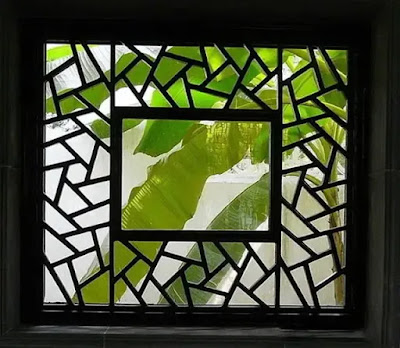


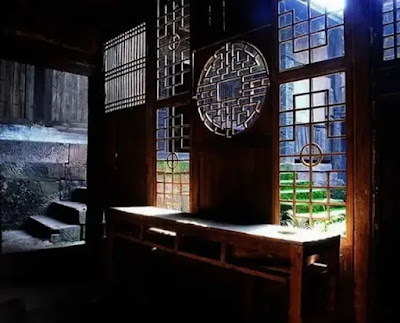


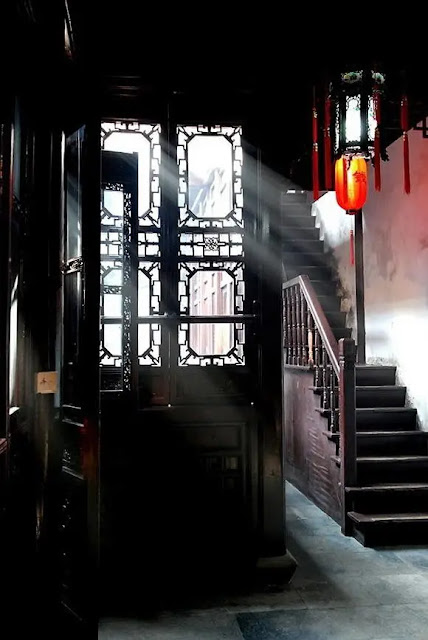



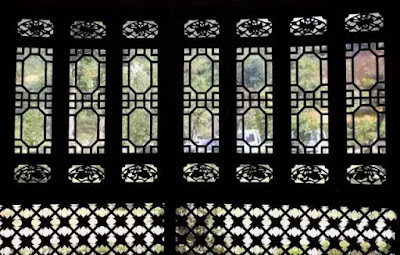




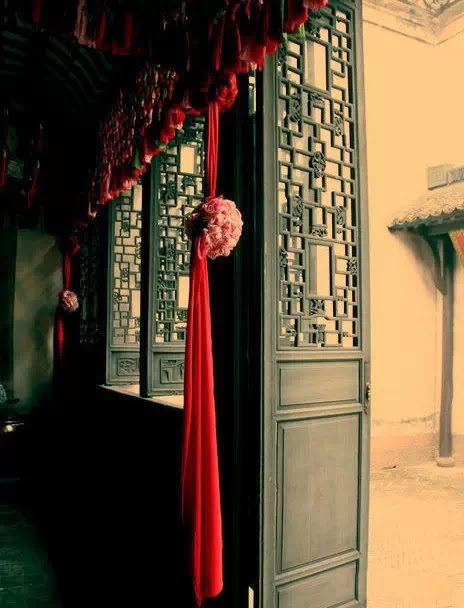




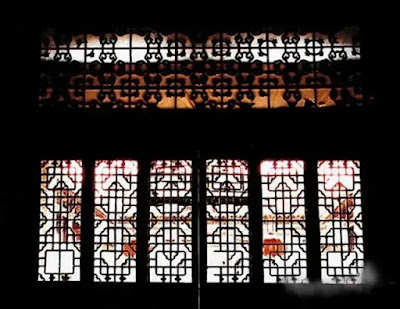

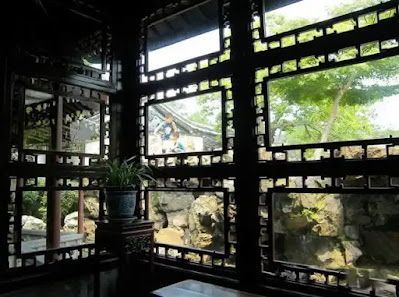















































No comments: